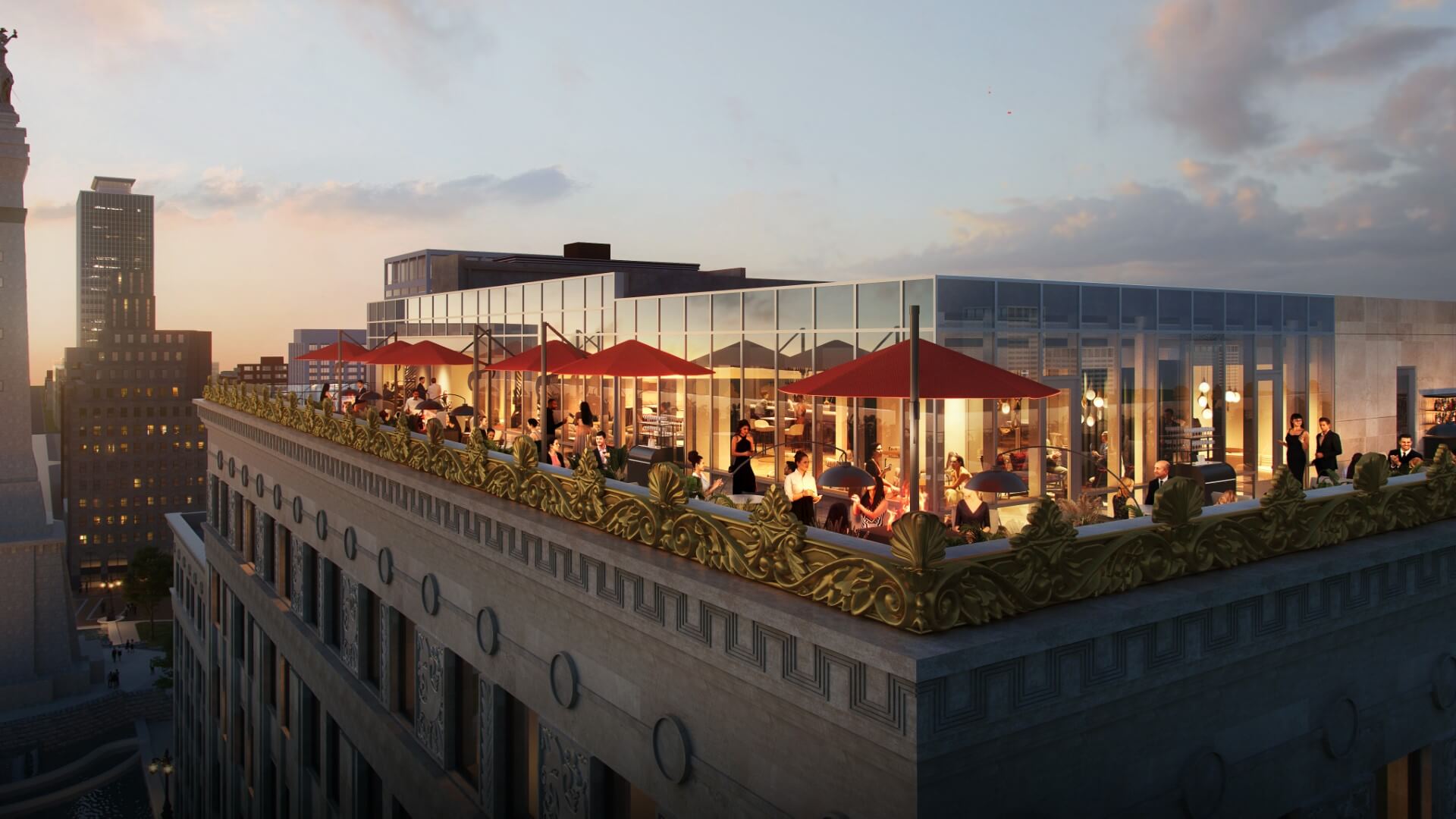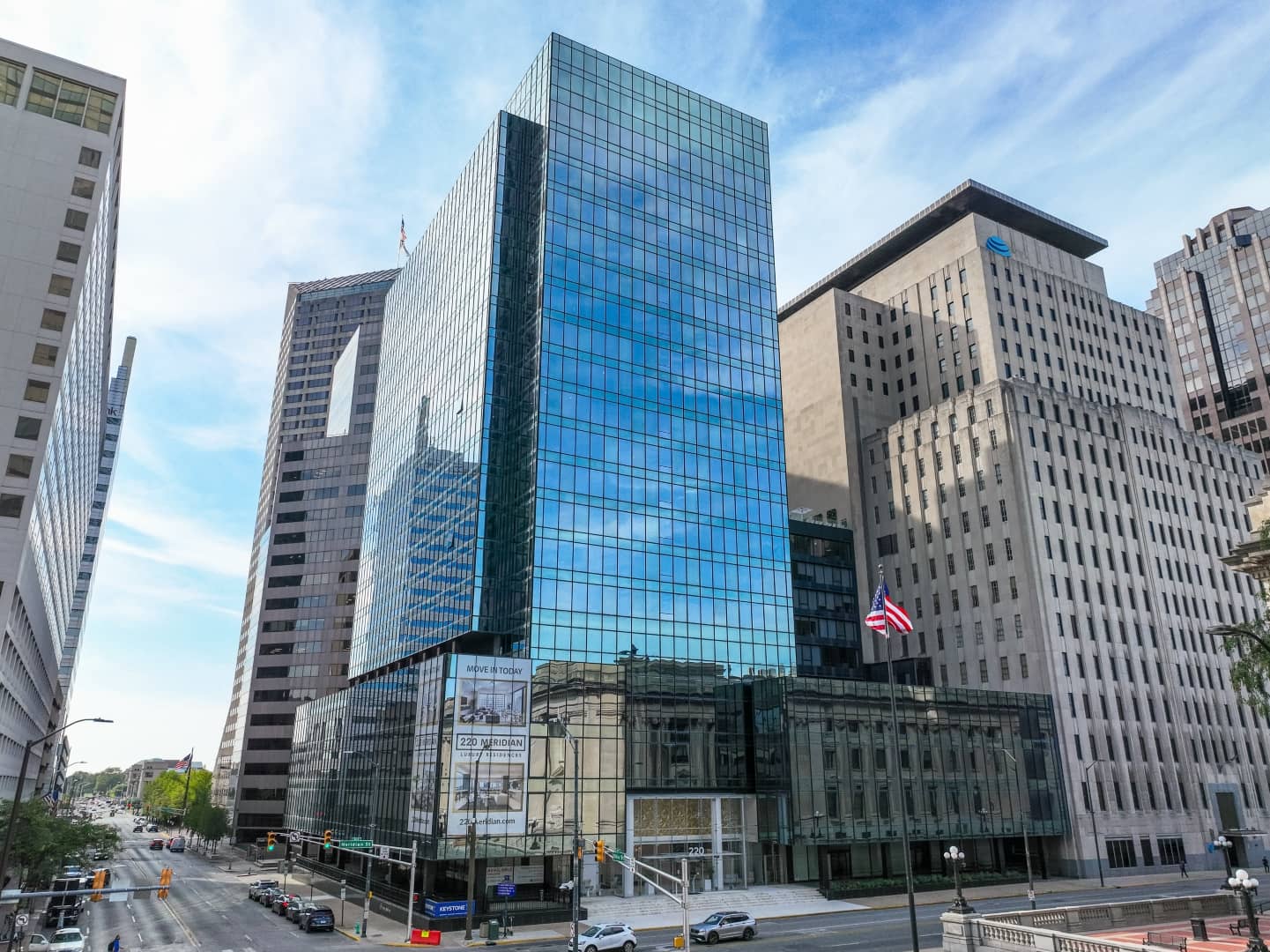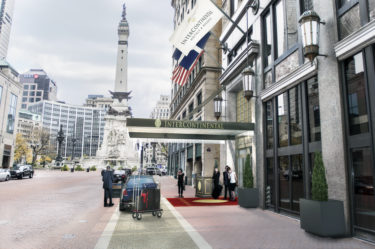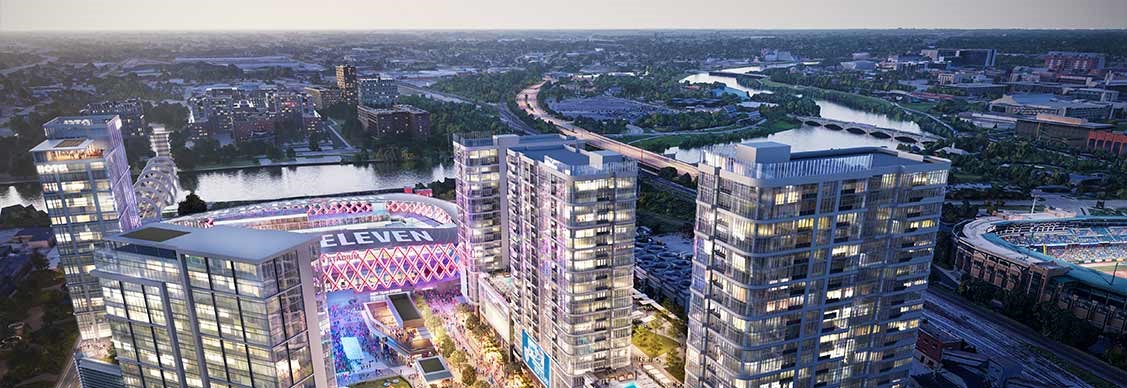Keystone employees contribute to LEED newsletter
EXPERIENCES WITH GREEN ROOF APPLICATIONS
~ Bruce Stauffer & Scott Hesler, Keystone Construction Corporation
Keystone Construction Corporation is currently building 3 Mass Condos, a ten story condominium building in downtown Indianapolis. Early on in the design process, the developer decided to include a roof top garden area into the project. Initially this was perceived as a nice feature to offer residents from an amenity stand point. As the planning went on, other benefits became obvious.
In discussions with the City of Indianapolis, this turned out to be the first instance in the City of Indianapolis where a green roof system was accepted by the Department of Public Works as an offset for structural storm water run-off detention. Through various calculations, it was determined that 2,600 square feet of planted area would detain all of the additional volume of run-off from the site. To accomplish both goals, the design incorporated extensive and intensive planting areas along with concrete pavers.
There are a couple of options involved in the installation of a green roof planting system. The first choice is whether to use a traditional system with a membrane roof under a separation barrier and bulk planting media. The second option is the use of a tray system for the plantings wherein the trays simply sit on top of the roof membrane.
The tray system is easier to install and to remove if repairs need to be made to the membrane but does not work well for larger plants such as shrubs and small trees. This is a useful option for a more utilitarian application oriented to runoff control and environmental considerations. The traditional system is the best choice where the goal is to include mounded areas with intensive planter areas for a more aesthetic application.The major issue that Keystone encountered in the development of our system involved getting a manufacturers warranty for the roof membrane below the green roof planting areas. Initially, the membrane manufacturers would warrant the membrane for ten to fifteen years but would not cover the cost of removing the materials on top of the roof to get to the membrane to make the repairs. This makes it difficult to meet the requirements of most architects and clients who expect a full warranty for their building. In the year or so that we researched the options, most of the roofing manufacturers have responded by developing total package systems including their membrane and the green roof systems in order that customers can purchase from one vendor and get a warranty against leaks for the entire installation. Obviously, it is critical that extra attention be paid during the installation to assure that seams, corners and flashings are installed properly. Most manufacturers recommend that the roof be flood tested prior to installing the plantings. These are all essential practices to avoid future problems that will be much more difficult to isolate and repair than the typical membrane roof.
In the end, Keystone chose to install a two ply modified bituminous membrane of approximately three hundred mil thickness directly over the concrete roof deck with four inches of rigid insulation above the membrane and the green roof planting and paver areas above the insulation. The pavers and planting materials serve as the ballast for the loose laid insulation. Roof drains are poured into the concrete deck and the membrane clamps into the drain body at that level. A barrier is placed around the drain to prevent the planting media from being washed into the drain.
For more information on the 3 Mass Condos project and/or technicalities surrounding the selection of a green roof system, please contact Scott Hesler of Keystone Construction Corporation at [email protected].




